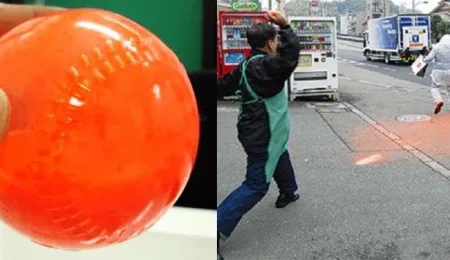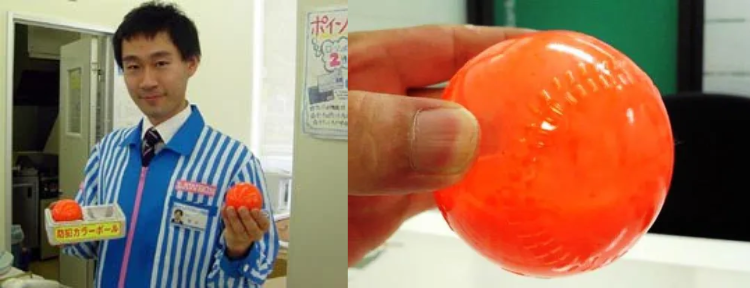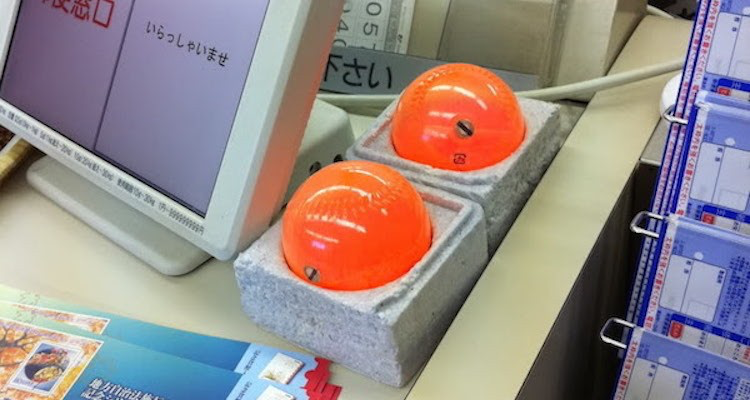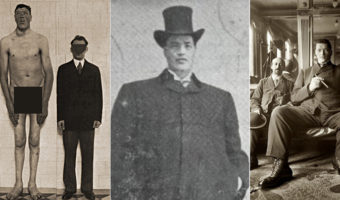Japan’s Police Track Runaway Criminals by Hurling Paint Balls at Them

Though Japan is one of the safest countries in the world, it does have its share of offenders. To deter criminals, the Japanese police use a unique tool: plastic balls filled with orange pigments. Shoplifters and robbers fear these balls and avoid looting places that stock them. But why are they afraid of Japan’s anti-crime paintballs, and do the balls really help the police catch criminals? Let’s find out.
Table of Contents
Bohan Yu Kara Boru are anti-crime paintballs that burst and mark criminals when thrown at them.
Bohan Yu Kara Boru, Japan’s anti-crime paintballs, might be mistaken for bright orange baseballs by those unaware of their purpose. Filled with bright liquid pigments, these plastic spheres are meant to be thrown at robbers. When the balls hit a criminal, or their vehicle, the pigments burst out, staining the target. Since the paints are difficult to wash off, once marked, the offender can easily be spotted and reported by the public.
It is also easier for the police to chase them down. The bright colors make it difficult for someone to hide or blend into a crowd. Even if the person abandons their marked vehicle, the police can easily track them down using the vehicle’s registration number.
Paintballs were introduced as a replacement for eggs as they could not be easily washed off.

The use of projectiles to mark criminals is not a new concept in Japan. Over 30 years ago, or even earlier, toll-booth workers were throwing raw eggs at toll-evading vehicles to help the police catch them. However, the eggs could be easily washed off, and the police considered it a waste of food.
So the eggs needed a substitute that wasn’t food, couldn’t be washed off, and was probably less smelly. Paintballs fit the bill and successfully replaced the egg.
Today, it’s not only the police who have paintballs at hand, ready to be hurled at an absconder. On the advice of police departments, banks and convenience stores across Japan keep them within reach behind counters in plastic containers. You may also spot these at hotels and gas stations.
But is it reasonable to expect employees at hotels and convenience stores to turn into great pitchers when the need arises and have perfect aim at their targets?
Well, on impact, the balls splash their pigments in a radius of 10 meters. So, an employee does not have to aim for the bullseye; they just need to land the ball near the robber, preferably near their feet, or aim for their vehicle, which offers a much larger target.
The only downside to these balls is that since the pigment dries up and hardens over time, they need to be replaced after a few years.
Though these paintballs are rarely used in active robberies, they deter people from robbing places that stock these balls.

It may seem logical for robbery victims to use paintballs and increase the chance of an arrest and recovery of their goods. However, in stressful situations where people are threatened and robbed, they are often left shocked, numb, or afraid to provoke the aggressors.
This behavior is reflected in statistics from the National Police Agency regarding robberies in 2007. During the first six months of that year, the police registered 230 late-night store robberies. Out of those 230 stores, 197 had paintballs. However, in only 3% of those cases was a ball actually thrown.
The numbers may not look good for paintballs, but they don’t truly reflect their real value. Banks and stores stock them more to deter criminals and protect their assets and goods than to use them in a threatening situation.
























